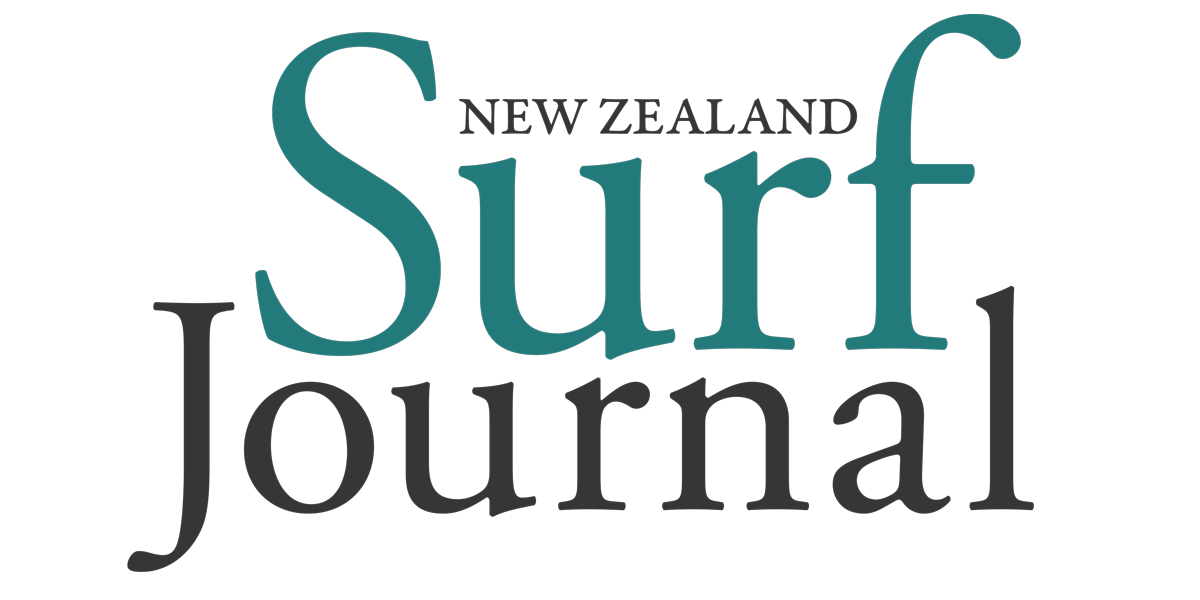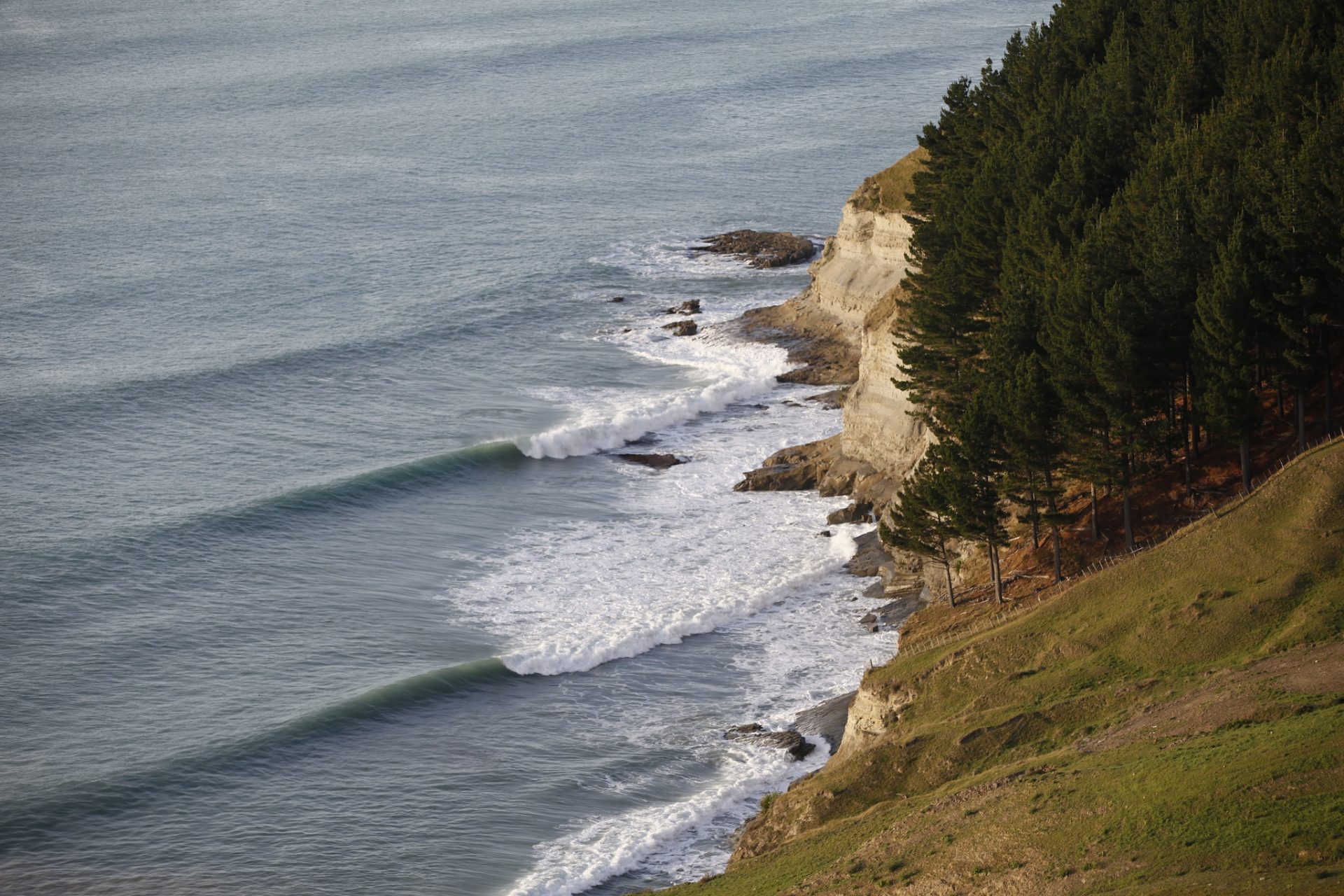Surf photographers go to extraordinary lengths to capture our waves and those who surf them. One of New Zealand’s finest even employs SAS-level training and wears a specially made sniper suit to roam the coastline completely undetected. He does it to capture line-ups that you’ll never find. He makes sure of that. This is Logan Murray’s story.
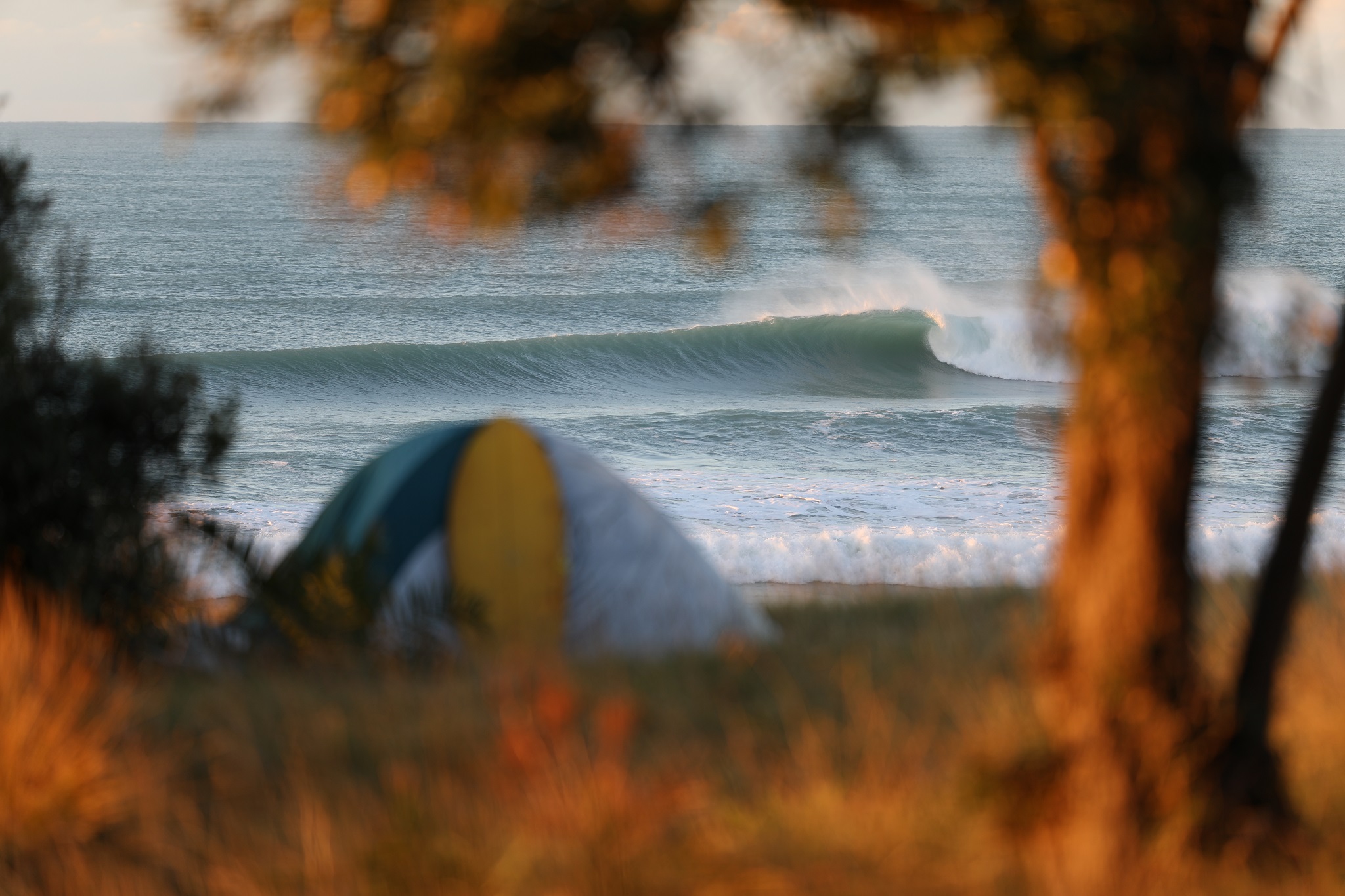
Crowds in New Zealand are minimal compared with those in the USA and Australia. Where I live, if there are five surfers in the water, I’m grumpy. Raglan is about the only place in New Zealand that has been truly ruined by crowd.
In the small rural town where I live, the coast for one hundred kilometres in either direction is rugged, indented with little headlands and coves, rivermouths and points. Most local surfers here frequent the same few spots in town all the time, rarely surfing anywhere else. Part of that is simply habit and convenience where they can park their car right in front of their favourite break, and part of it is social – they surf with people they know well, exchange social gossip, and tips as to where the best sand banks are. They get the wave count they want, and can grab a good coffee nearby. It’s all easy and convenient.
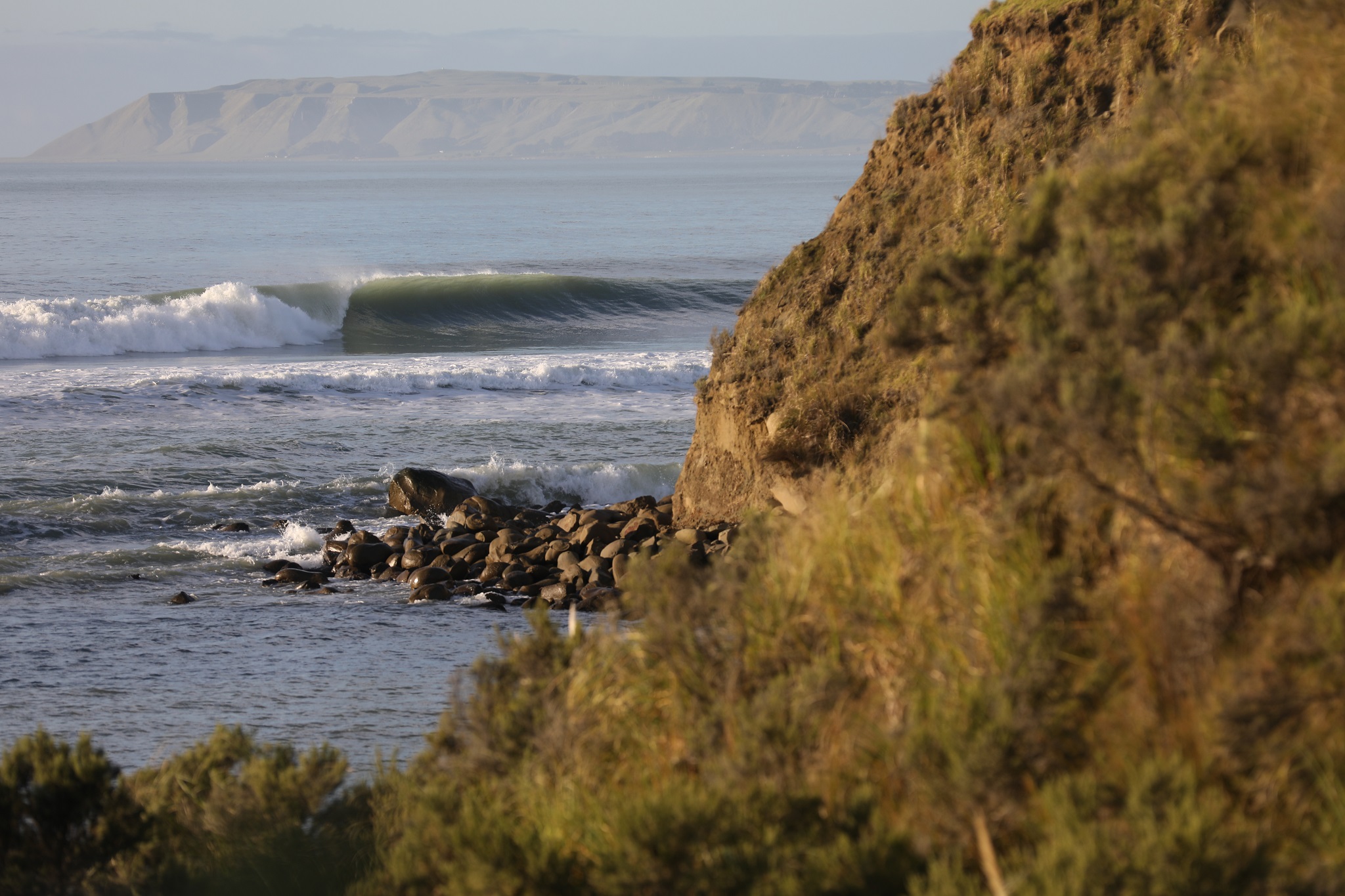
Most of the best breaks near town have already been found, and the lesser breaks are more fickle for shape, swell and wind conditions. The breaks further out of town, those sheltered from view by farmland, commercial forests and rugged bush, are left alone and undiscovered.
If this was California or Australia, these more remote places, with no public road access, would have been well searched by now, each spot with a few regulars, and invariably some nasty piece of work claiming to be “the local” harassing stray surfers and threatening to smash that camera.
We just don’t have the crowd pressure to force surfers to step out of their comfort zone.
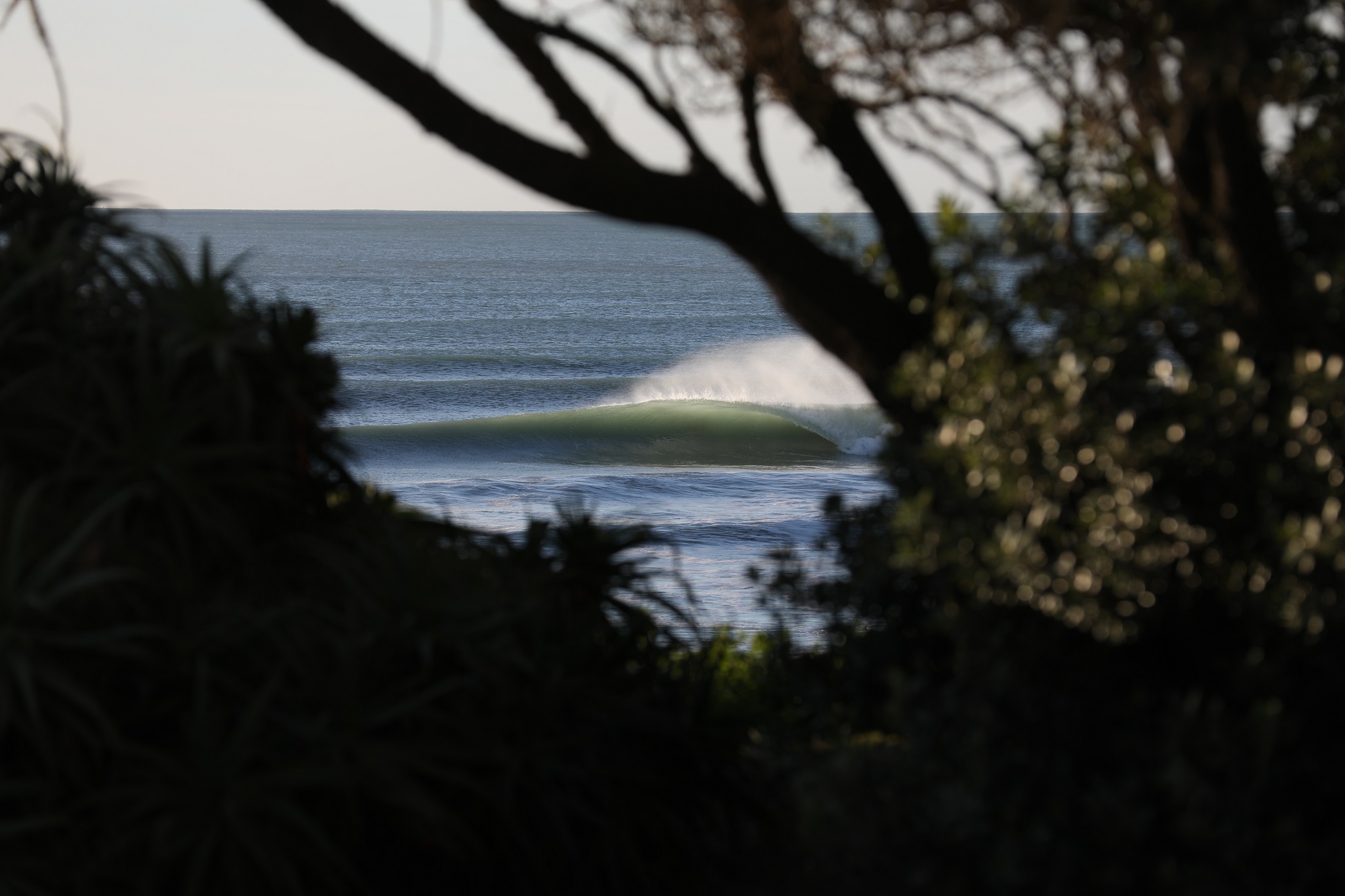
In the past few years, a few local surfers have begun exploring the remote coastal valleys and peninsulas for waves. It’s much harder than it seems. The terrain is very steep, there is no cellphone coverage, gravel roads and dirt wheel tracks are few and far between. There’s a lot of steep hiking, so you don’t take anything that you won’t need.
Sometimes these lone wolf surfers will invite me in, to go with them to the spot they have discovered, which might seem a bit strange that they would invite a photographer, but not other surfers. They do it because they have confidence in me to keep it quiet. They know that I won’t be back there on the next swell with a bunch of sponsored hot shots to blow it wide open.
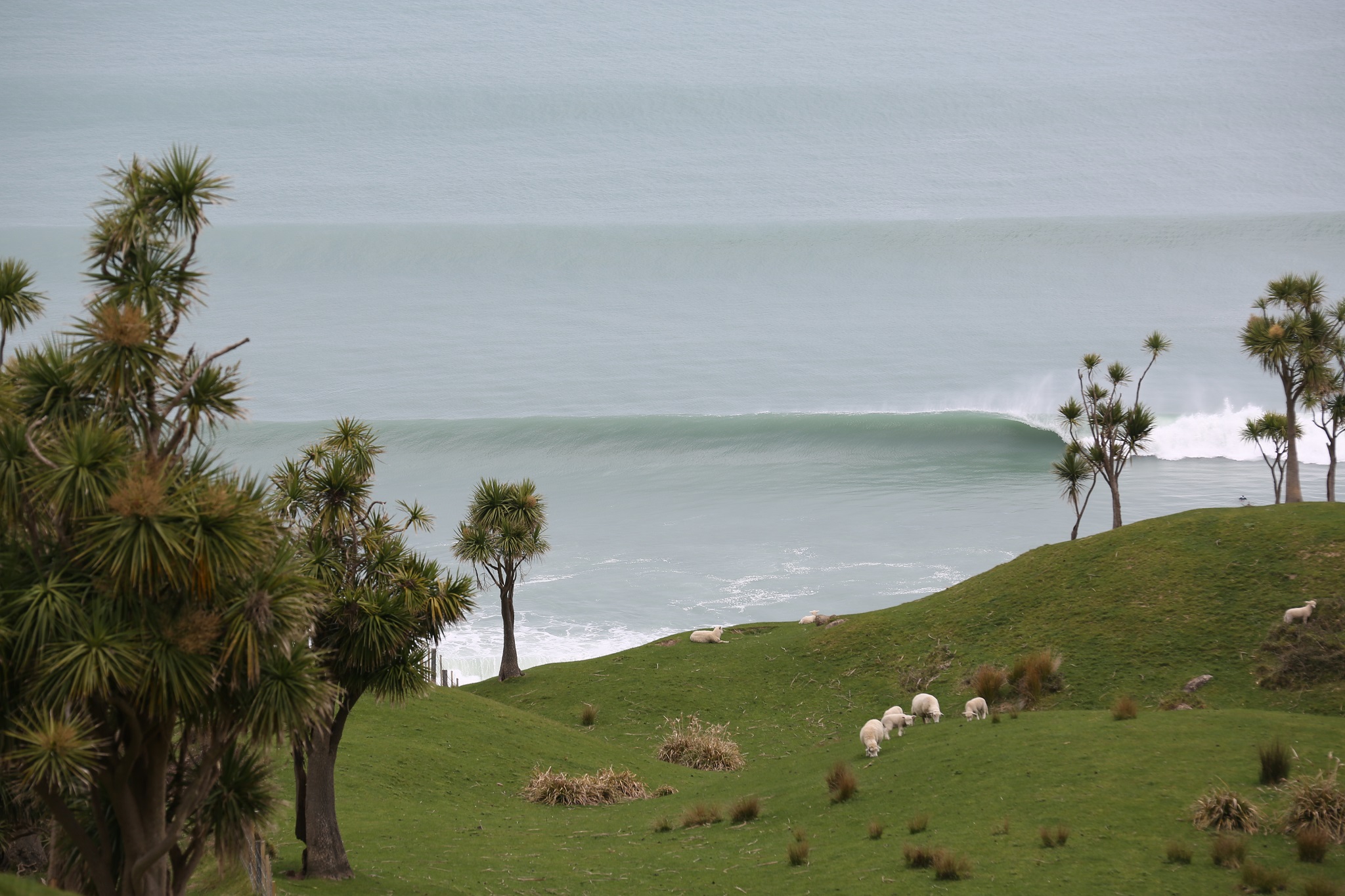
They also know that I don’t have a cellphone, that I don’t do Twitter or Facebook, that I don’t have an Instagram account, nor even a website to sell images. I provide images to high-brow publications overseas who don’t name places. The surfers who invite me would like to have a nice, high quality, framed enlargement of their discovery spot on their lounge room wall, to torment their friends. So I get guided into a spot I didn’t know about, to shoot it when conditions are promising; and they get a nice print of it looking great. They trust me, and I respect that trust.
I enjoy wave hunting with these guys also. Having to sneak in and out of surf breaks brings a totally new dimension to surfing. There’s an element of harmless mischief and “catch me if you can” excitement. It relegates merely paddling out at your local to seem really boring in comparison.
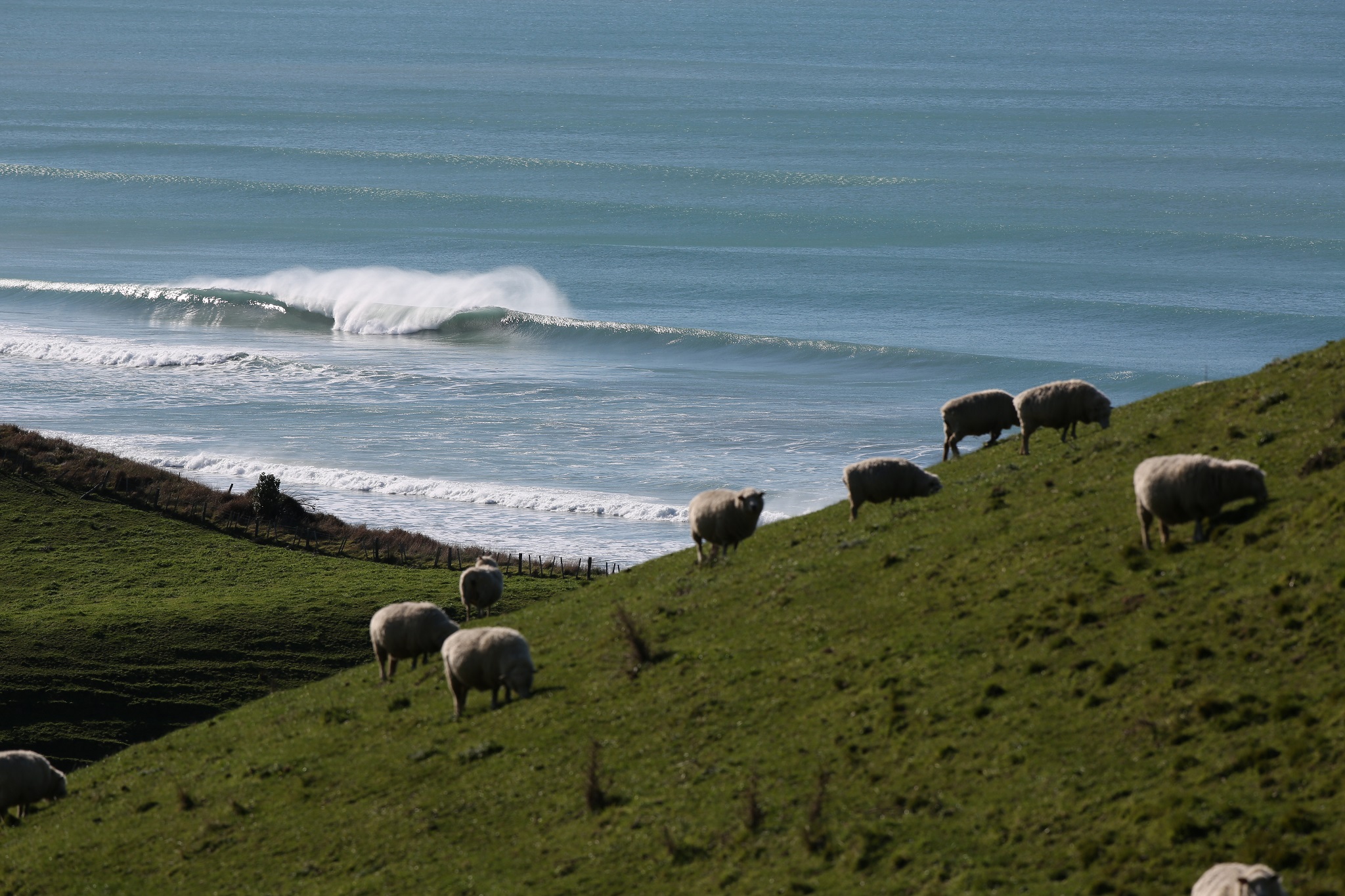
We’re very similar regarding our surfing life in that they know how to move around without being detected, are conscious of camouflage, and prepared to put in the graft work on these spots; and do it all under the radar. The only difference between us is that they are going on a mission to surf, I’m going there to shoot pictures. There’s a mutual respect among us. I carry an emergency locator beacon to the more dangerous spots: the areas that are favoured by fishery poachers, deer poachers, and commercial dope growers. Farm gates at the roadside are chained and padlocked, the farmers themselves are conservative people, suspicious of strangers.
Most of the spots are not epic. They are scenic and pretty, but often the wave quality is rather average, which is probably why they remain empty. In the right conditions of swell angle, wind and tide, they can light up and truly sparkle; and of course there is nobody else there to surf it. That’s the reward for all the ground work of getting to really know the place and its little quirks, and tolerating all the fruitless hikes in. As a photographer, the stakes are high, but the rewards are great, not in a financial sense, but in terms of stoke and satisfaction.
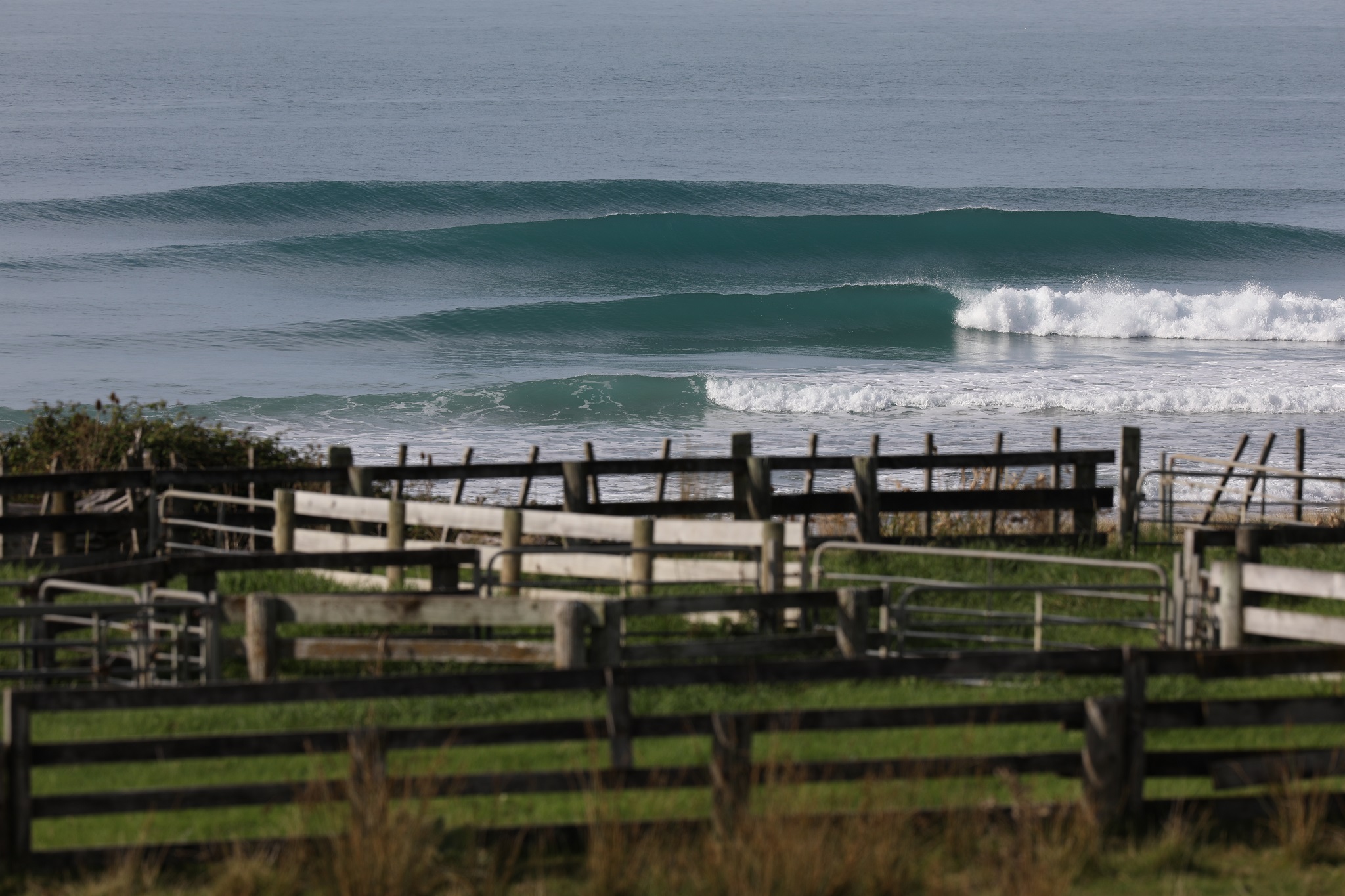
In recent years, the high dollar value of farm animals has encouraged rustling on a large scale in my region. We’re not talking about someone driving off with a couple of sheep in a car – it’s organised criminals. They arrive with bolt cutters, large trucks, a team of farm dogs trained to round the animals up in the dark of night without barking so they can steal several hundred animals in one hit. There’s so much money in it, that these people don’t do anything else for income, they’re professional criminals. Farmers have responded by installing concealed cameras, flying drones along the boundary fences, and denying access to anyone. For surf explorers, this farmer resistance is a real problem.
Things don’t always end well. Recently three surfers were caught and ordered back out by a local farmer while trying to hike through a large farm, owned by a tribal trust, which has very good beach breaks and two right points. They had left two dozen cans of beer at the farm gate as a goodwill gesture out of respect: a koha. Hiking through this farm would take at least three hours, so it would be a real mission carrying a surfboard, wetsuit, plus food and drink. The degree of effort still didn’t cut any mustard with the farmer, who told them, “Don’t try and come back, and you can take your beer with you on your way out!”
Farmers can be gnarly people to deal with, but I don’t let that stop me.
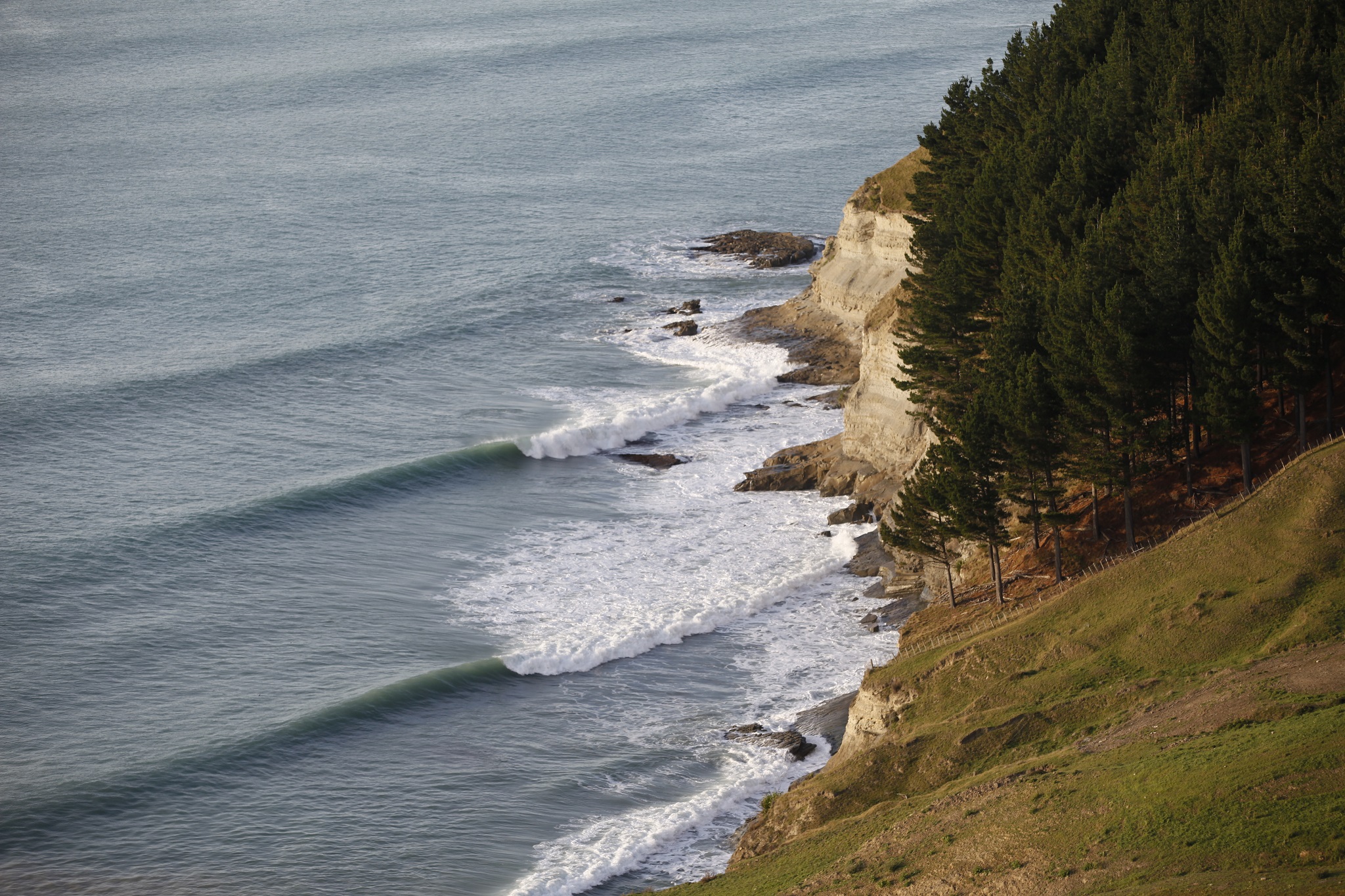
The commercial forestry companies are no better. They have major problems with deer poachers and dope growers, often armed and confrontational. Foresters have responded by installing solid steel gates at road entrances with heavy steel boxes protecting the padlocks from poachers equipped with bolt cutters. I’ve managed to get keys signed out for these gates, but I had to go through a screening process to get them. If I lose a key, I have to pay $1000.00 to get the locks replaced and new keys made. I prefer to use the narrow, winding gravel roads in darkness before sunrise so I get to shoot with dawn light, and so I can see the headlights of any oncoming huge logging rigs on the single lane, and they can see me. Finding a space to pull off the road and let them through is not easy.
I’m a line-up shooter, always have been. To get published I need to continually come up with fresh images, new compositions, spots the magazines have never seen before. Places without surfers or human intervention. I try to capture the remoteness, the rural character, the unique vegetation of my agricultural region. The waves have to be good – near perfect really. No wobble or wonk on the wall, no flat spots, no teeny knee slappers. No full, fat shoulders. Not even glassy empty peelers will do. Editors are only interested in quality hollow barrels. I can sometimes have a mate paddling past on the shoulder to give human interest and scale, but only two guys out at the most.
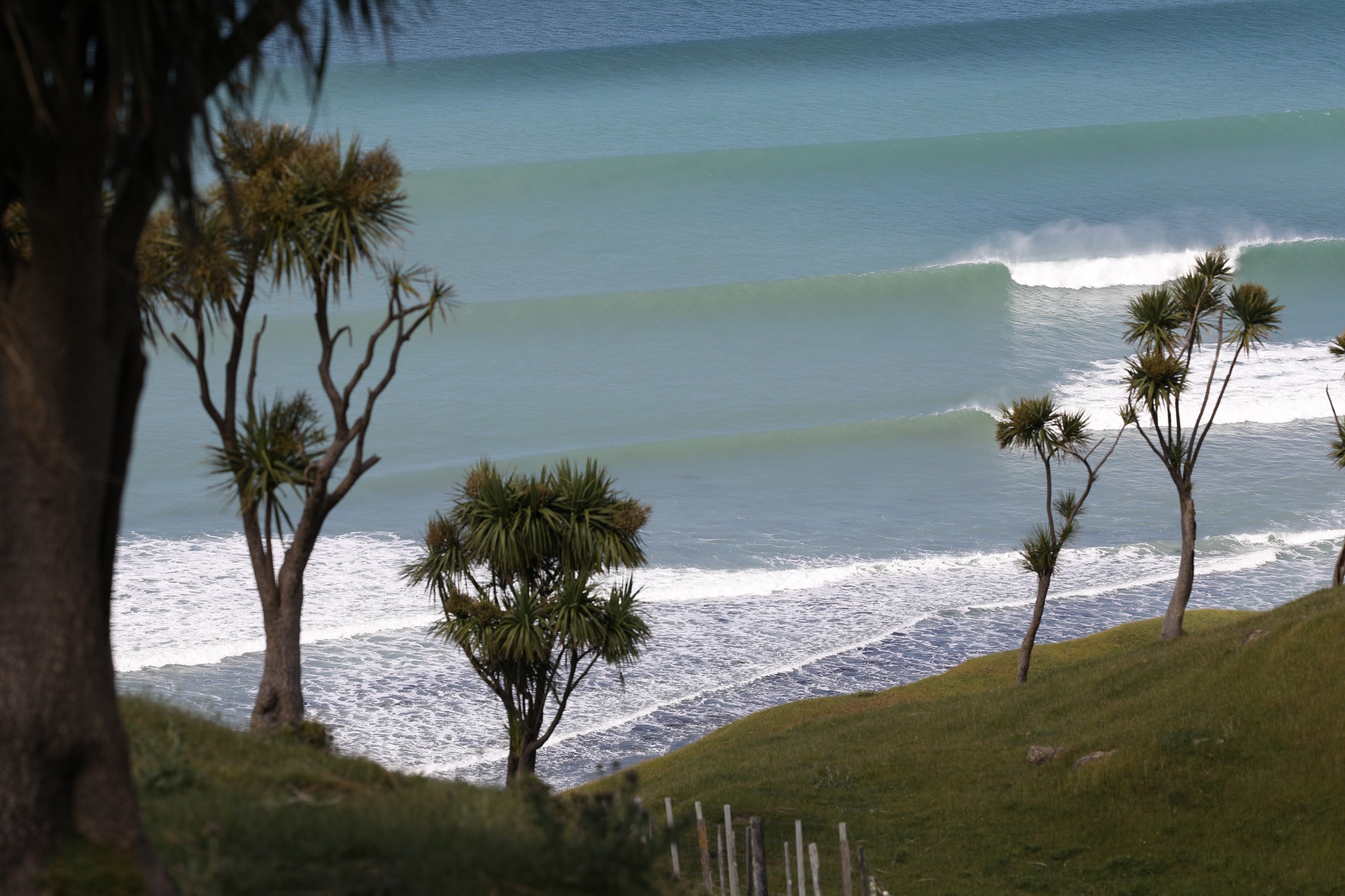
Luckily, hardly any of my mates want to go to these places. They don’t want to have to hike into places with food and water as well as surf gear, risk being skunked with crap waves when we get there, or risk an ugly confrontation with a violent farmer. They mostly prefer to surf their reliable local.
I recently had a young surfer bail me up in a car park and wanted me to tell him about my discoveries. He claimed that it was a waste of good waves if they were going unridden and would leave the town breaks less crowded if local surfers like himself could surf them. While I was very tempted to point out that if he got off his arse and did a bit of searching himself, he might find some; I politely responded that if I told people where they were, I would be denying them the pleasure and excitement they would get in discovering for themselves.
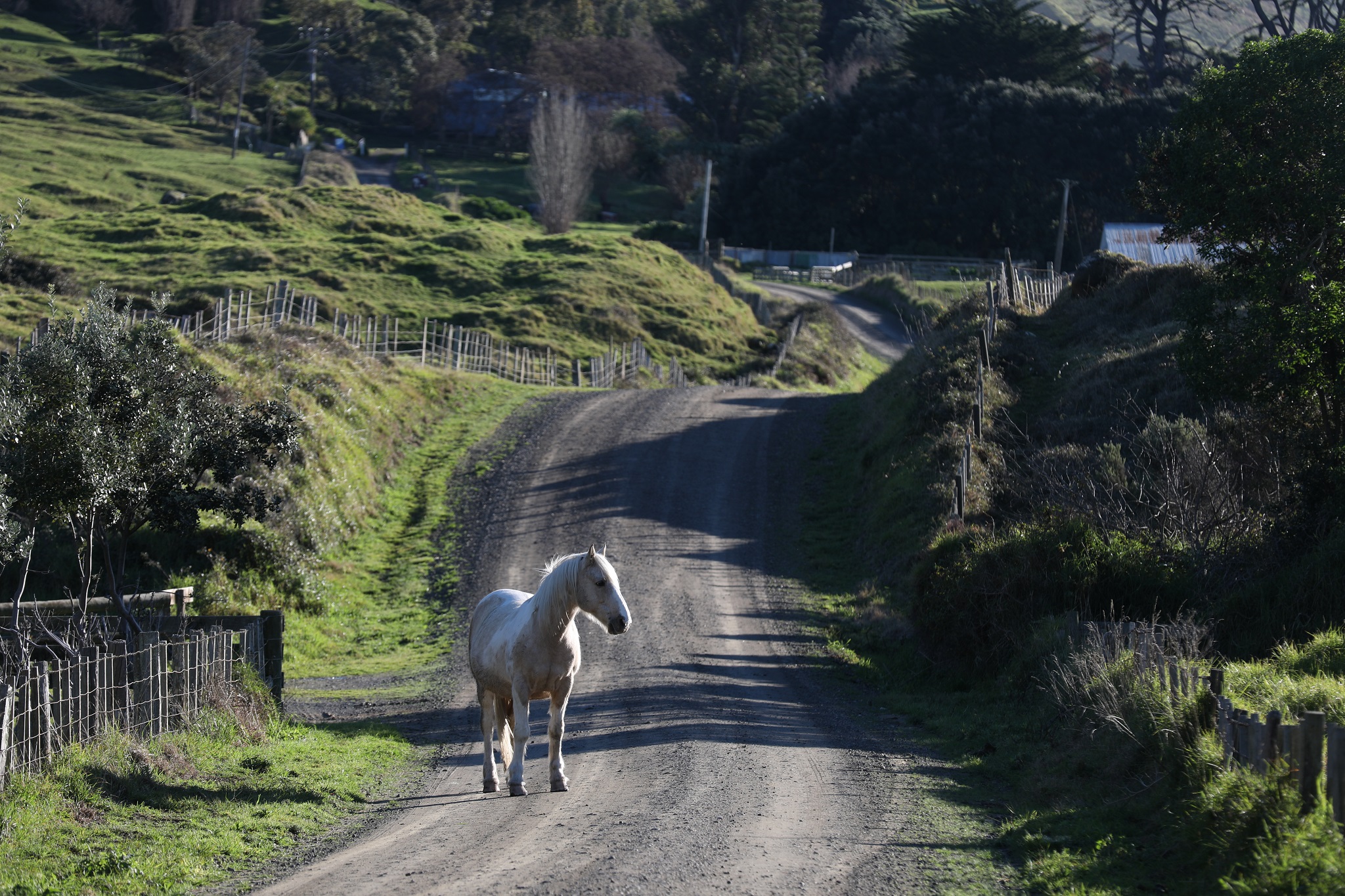
I’ve put in a lot of time and effort over years to get a handle on when these places break good, and I’m not prepared to pass that on to people who are bone lazy. While I do get approached, mostly from overseas surfers coming to New Zealand on vacation, I’m not a surf guide. I could never trust someone I didn’t really know. I admit that I’m more driven than most other photographers in New Zealand to get “the shot”; but I get more shots published than most other photographers in overseas magazines as a result. I’m prepared to take risks. I try to examine how I can get myself into a place to shoot, as opposed to thinking too much about how I’m going to be prevented from getting in there.
Winter is the best time of year because of bigger swells from more powerful weather systems, more offshore winds, and fewer prying eyes. Winters are cold here. It snows sometimes in the hills where I wave hunt, and seriously good winter clothing is essential rather than a luxury, as your survival may depend on it if things go badly.
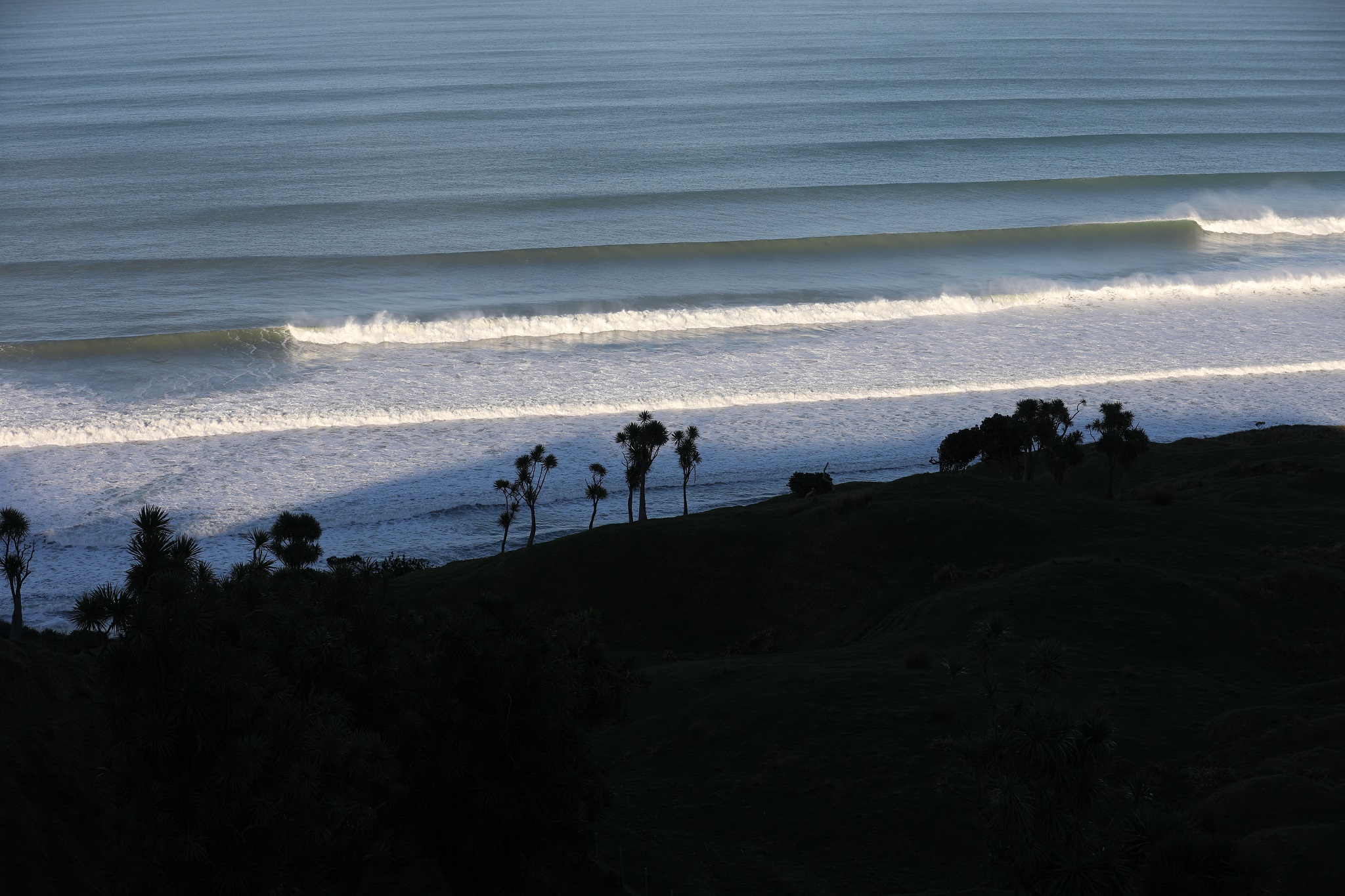
I mostly go alone. It’s easier to conceal one person than two, and there’s no talking when you’re alone. When I do take a mate, there are rules and I’m very picky about who I take. I pick mates who don’t hang out in bars or trendy cafés where they might be tempted to hold court to impress a pretty face. Mates who have learnt to breathe through their nose and keep their mouth shut; guys who are grass roots, not sponsored, kind of underground surfers, experienced and very competent in a wide range of wave types and are still comfortable if the size gets up a bit and it gets hollow and breaks shallow as well. Clothing and board bag are dull, kind of camouflage. No surf label stuff. More like man of the land kit to readily become part of farmer culture. An affable manner to calm an angry farmer is a plus as well.
We use some basic hand signals so we can communicate silently if a farmer is near. We avoid ridgelines where we could easily be spotted from a distance, and bare dirt tracks, especially in winter when the ground is soft, so we don’t leave behind tell-tale footprints. No wrappers or peelings are left behind. On the way in, we identify rendezvous points and an observation post in case things go pear-shaped and we end up needing them. Friends joke that going on a secret surf mission with me, is like going on a special forces military operation.
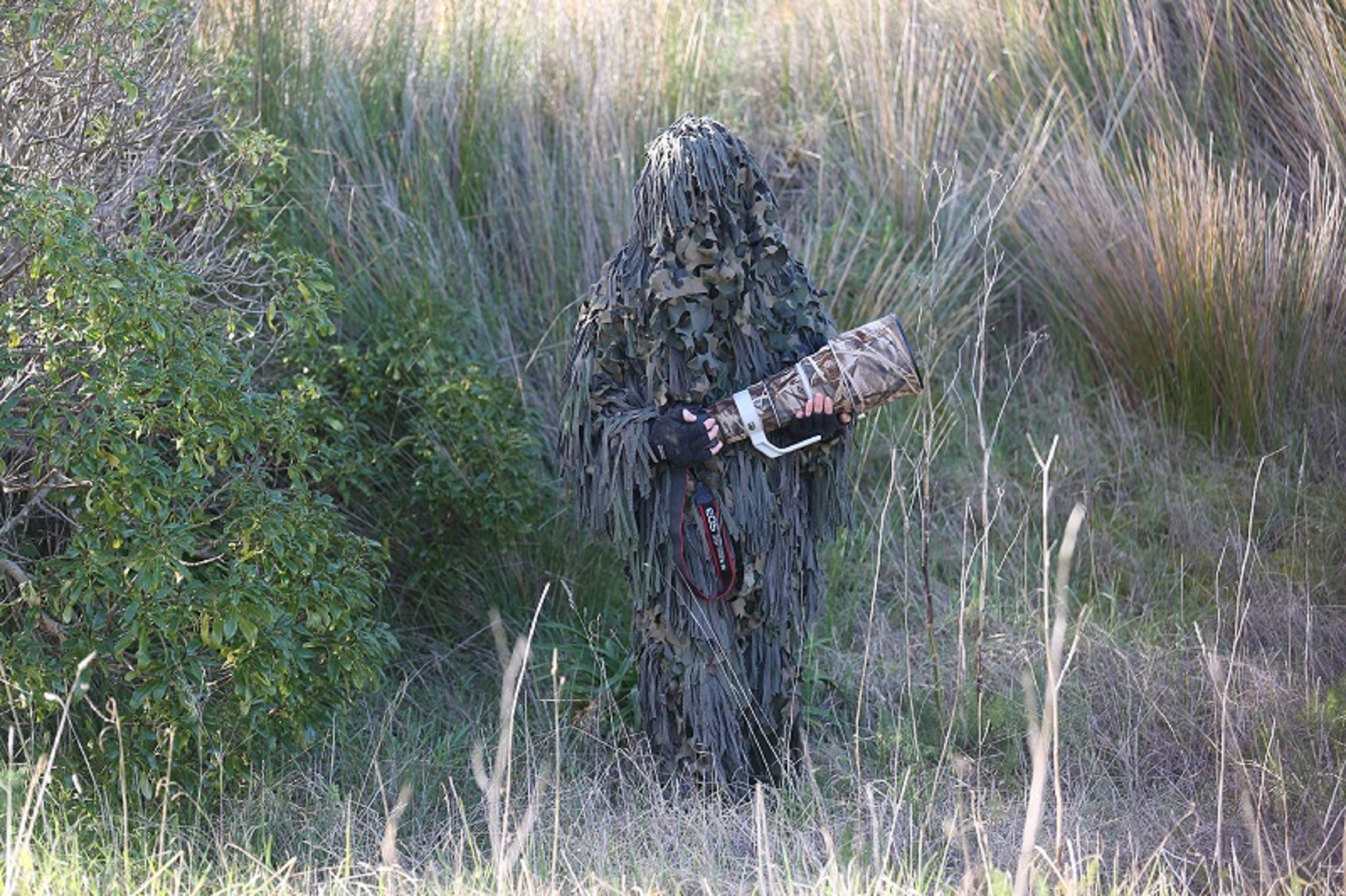
For high risk spots, I have the option of deploying a sniper’s Ghillies Suit. It takes away the human shape, and I become this shaggy camo blob, invisible from only a few metres if I stay still. The shaggy fabric doesn’t rustle, so I can slowly move off a track silently and undetected. Instead of shoes, I often wear three pair of socks – leaves no tread, just some flattened grass, and it’s hard to determine when it was made. It’s one of the tips a former SAS sniper and pace tracker taught me. I’ve found his teachings very helpful in my work.
My lenses are fitted with camo lens coats to maintain discretion.
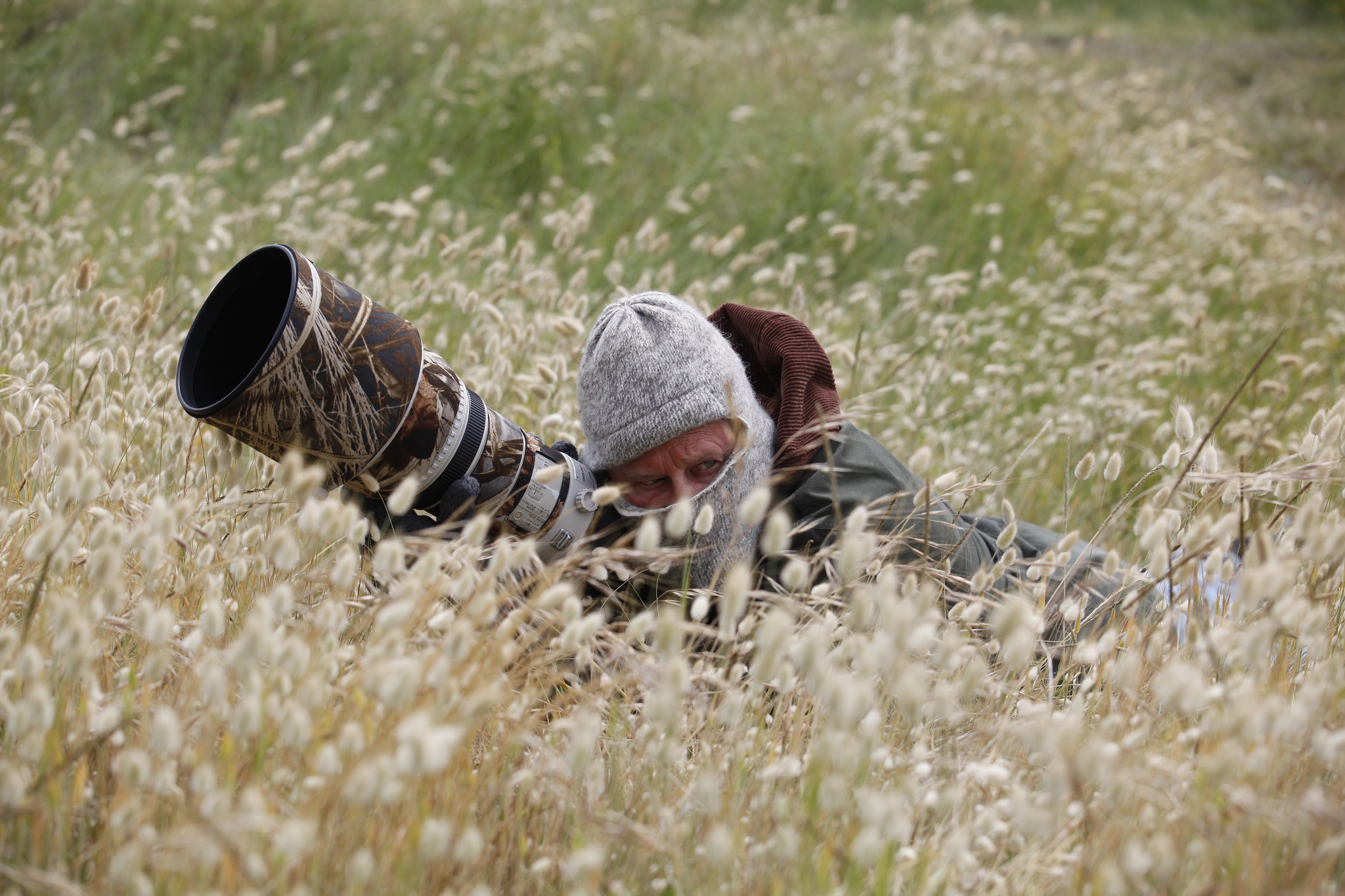
One thing my former SAS mate stressed was that I always need to have a cover story ready to explain what I’m doing there if I am discovered; some believable angle that will fox a farmer for as long as it takes to extract myself. By the time he realises that it was likely all bullshit, I’m gone. Mine usually is that I’m an ornithologist studying the marine birds and their nesting sites in that area, which is why I’m wearing camo clothing and have camo on my lenses. The real photographers specialising in “birding” as they call it, are very passionate about it. They’re often kind of eccentric characters and use exactly the same high quality cameras and lenses that surf photographers use; so it’s a believable cover story.
I make a point of researching what species of marine birds inhabit the area I’m sneaking into in advance, so if I’m asked, I have a plausible answer. If I really want to mock a farmer, I can spin a line that the rare golden chested, orange beaked, blue crested, dove tailed, speckled back, red legged, web-footed chook has been sighted in the area, and I’m there to confirm the sightings. I try not to tell farmers that I shoot images for surf magazines, because they fear that where surf photographers go, surfers will later follow.
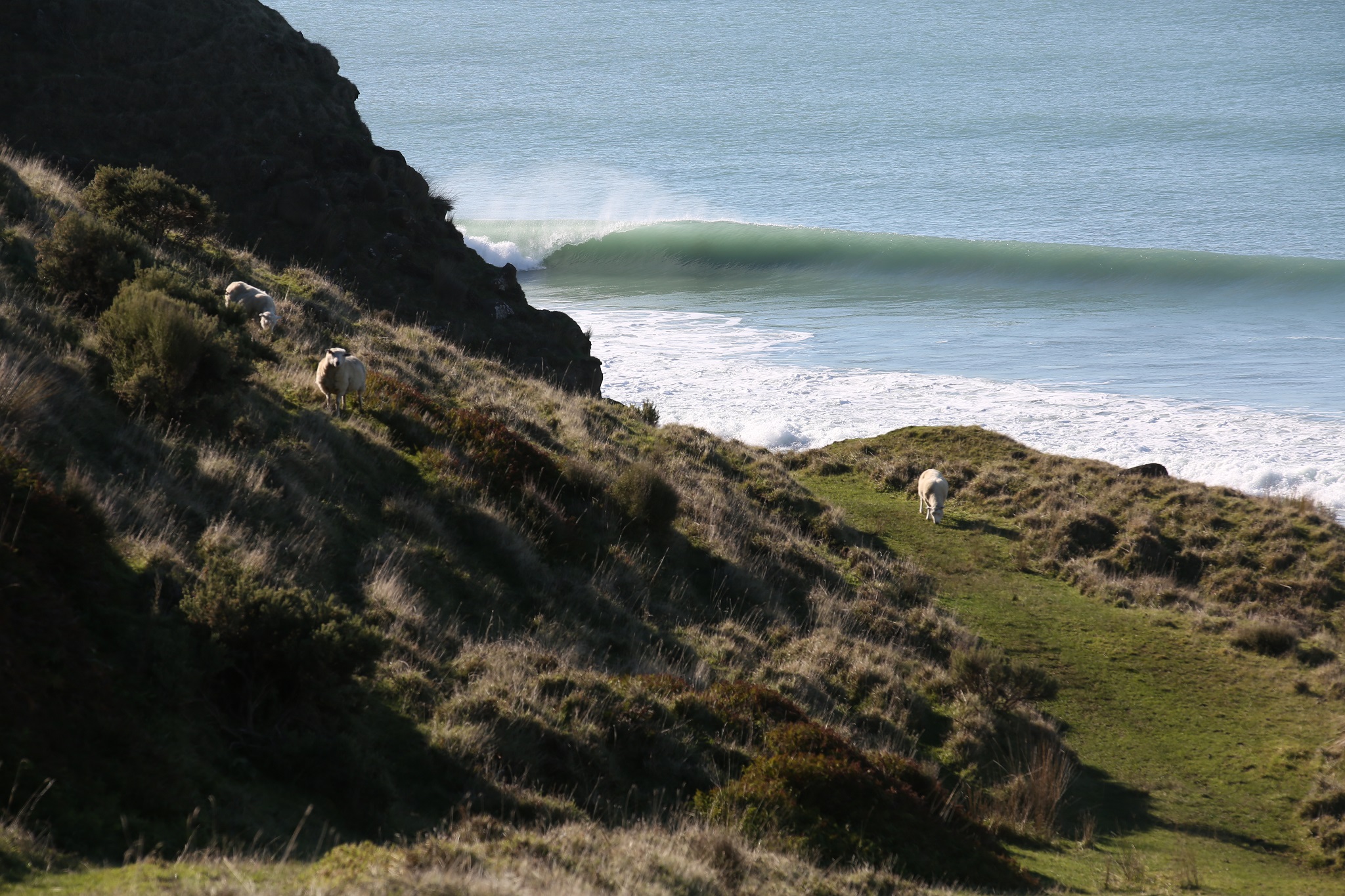
In the last five years I’ve found several new quality breaks, including rivermouths and point breaks that most Kiwis have never seen, or ever will.
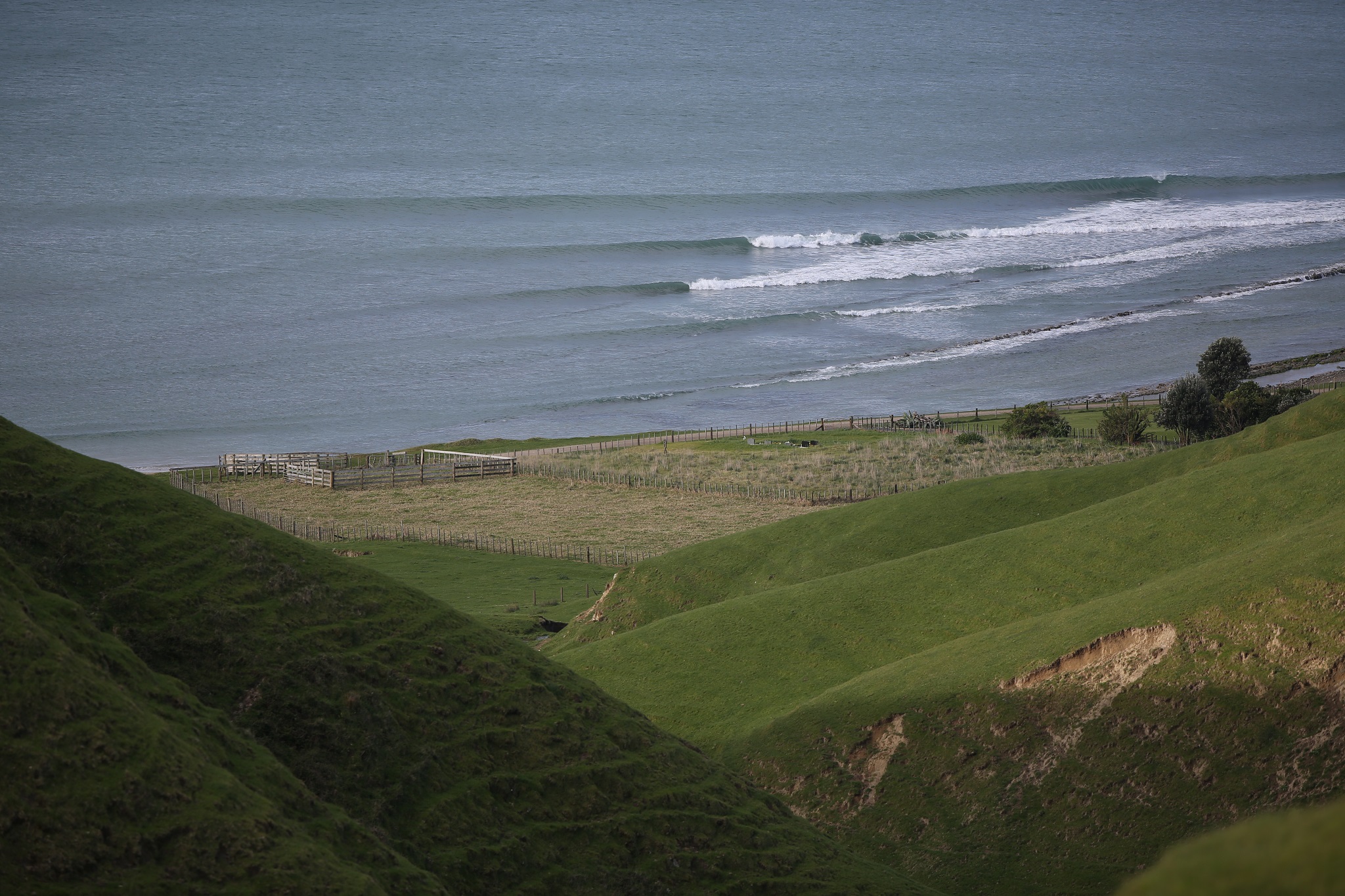
I do get skunked a lot. That’s the reality of surf exploration. With that said, when I walk out of the dense bush on a ridgeline into a gap where I can see the ocean, and there are clean lines of nicely groomed swell marching at me, hitting up on a point or river mouth, and peeling off against the offshore wind with the spray fanning off the lips, and knowing that I’m probably the first to see that spot breaking, well, let’s just say that the stoke level is right up there! I’m in my happy place. I’ll spend a whole day happily shooting different angles trying to nail the killer line-up at someplace.
The remoteness, the lack of buildings and roads, the total silence apart from birds and animals; and the sheer natural beauty of some of these places are hard to capture in a single still image. Sometimes I look around me out there in the wilderness, and wonder what these breaks will look like in another 50, or 100 years from now. Will they remain isolated and pristine, much as they are now; or will they simply become another Rincon or Noosa, all built up and developed with roads, houses, cafes and restaurants, with the once empty waves swarming with greedy surfers, all hustling for their slice? I hope not.
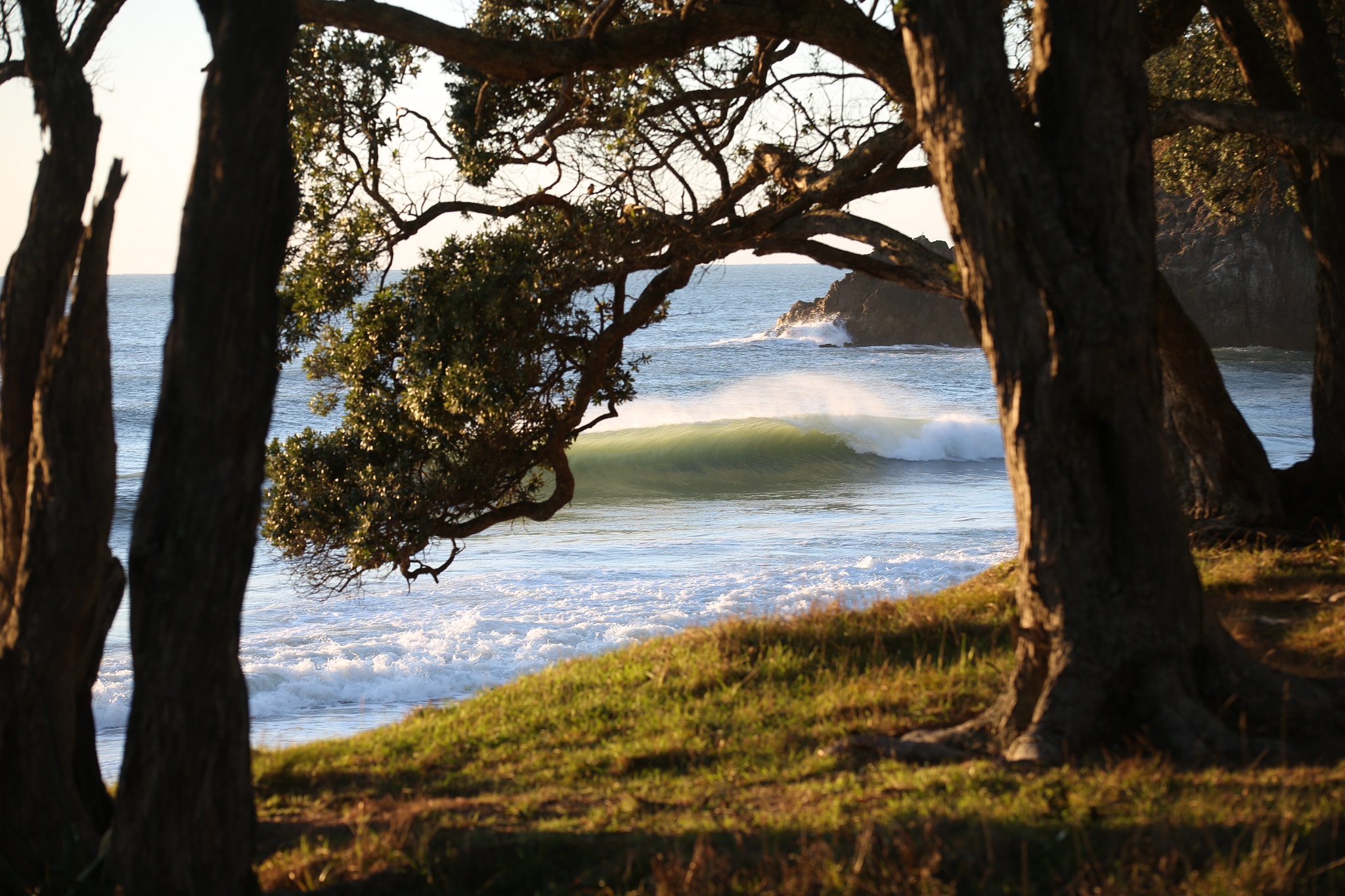
As a kid in the mid-’60s I surfed places just as empty and unspoilt as these and I wouldn’t bother going back to them now. They are ruined. Changed forever by gradual coastal development. Perhaps the rugged remoteness of my current playgrounds will ensure their protection. I’d like to think that might be the case.
